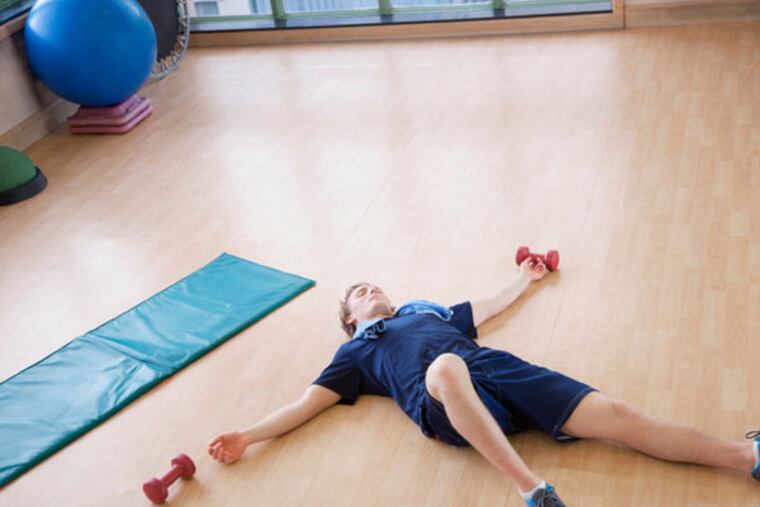Can a ride on the treadmill predict your mortality?
Having created a new algorithm called the FIT Treadmill Score, researchers believe they can predict long-term death risk based solely on treadmill exercise performance.

You do your best to eat right, to exercise, and even to make sure to go to the doctor's for regular checkups. You would never consider yourself at risk for an early death, would you? Life and death are unpredictable, however, and new research by a group of cardiologists at Johns Hopkins School of Medicine has found that even those healthy individuals with normal cardiac stress testing could be at risk.
Until now, only a person's short-term risk has been able to be gauged using other exercised-based risk scoring systems that also incorporate other tests including electrocardiograms (EKGs). And these were only measured for patients already diagnosed with heart disease or with visible cardiovascular distress.
With traditional exercise stress tests, those patients with normal EKG readings and no chest pain, dizziness or other difficulties during the tests usually do not require any follow-up. This new data however released from Johns Hopkins indicates that within that group of patients with "normal stress results" there are actually different levels of heart and lung fitness.
"Stress test results are currently interpreted as 'either/or' but we know that heart disease is a spectrum disorder," said lead investigator Haitham Ahmed, M.D. M.P.H., a cardiology fellow at the Johns Hopkins University School of Medicine in a press release. "We believe that our FIT score reflects the complex nature of cardiovascular health and can offer important insights to both clinicians and patients."
Having created a new algorithm called the FIT Treadmill Score, they believe they can predict long-term death risk based solely on treadmill exercise performance. A person's score is determined by how well he or she does exercising on a treadmill at an increasing speed and incline. Originally described in the Mayo Clinic Proceedings, the research team analyzed over 58,000 heart stress tests to help them create a formula that can estimate a person's risk of dying over a decade. They believe that the score could provide important details about a person's health and that it should be calculated for anyone undergoing cardiac stress testing.
"The notion that being in good physical shape portends lower death risk is by no means new, but we wanted to quantify that risk precisely by age, gender and fitness level, and do so with an elegantly simple equation that requires no additional fancy testing beyond the standard stress test," added Dr. Ahmed.
The formula they created factors in age, gender, peak heart rate during intense exercise, and a person's ability to tolerate physical exertion measured by METs, a measure of exercise intensity based on oxygen consumption. The harder the workout, the higher the METs, therefore it follows that running equals eight METs while slow walking only amounts to two.
Senior study author Dr. Michael Blaha, director of clinical research at the Johns Hopkins Ciccarone Center for the Prevention of Heart Disease, also said in the press release that they "hope the score will become a mainstay in cardiologists and primary clinicians' offices as a meaningful way to illustrate risk among those who undergo cardiac stress testing and propel people with poor results to become more physically active."
During the study, the team collected data from 58,020 people from Detroit, Michigan, ranging in age from 18 to 96, who had undergone a standard exercise stress test some time in between 1991 and 2009. They then followed them to see how many from each fitness level died over the next ten years. And what they found was that among people of the same age and gender, fitness level is the biggest predictor of mortality.
A look at the scores:
100 or higher: 2 percent risk of dying over the next 10 years
0 to 100: 3 percent risk of dying over the next 10 years.
Negative 100 to 0: 11 risk of dying over the next 10 years
Lower than negative 100: 38 percent risk of dying over the next 10 years.
"We hope that illustrating risk that way could become a catalyst for patients to increase exercise and improve cardiovascular fitness," Blaha added.